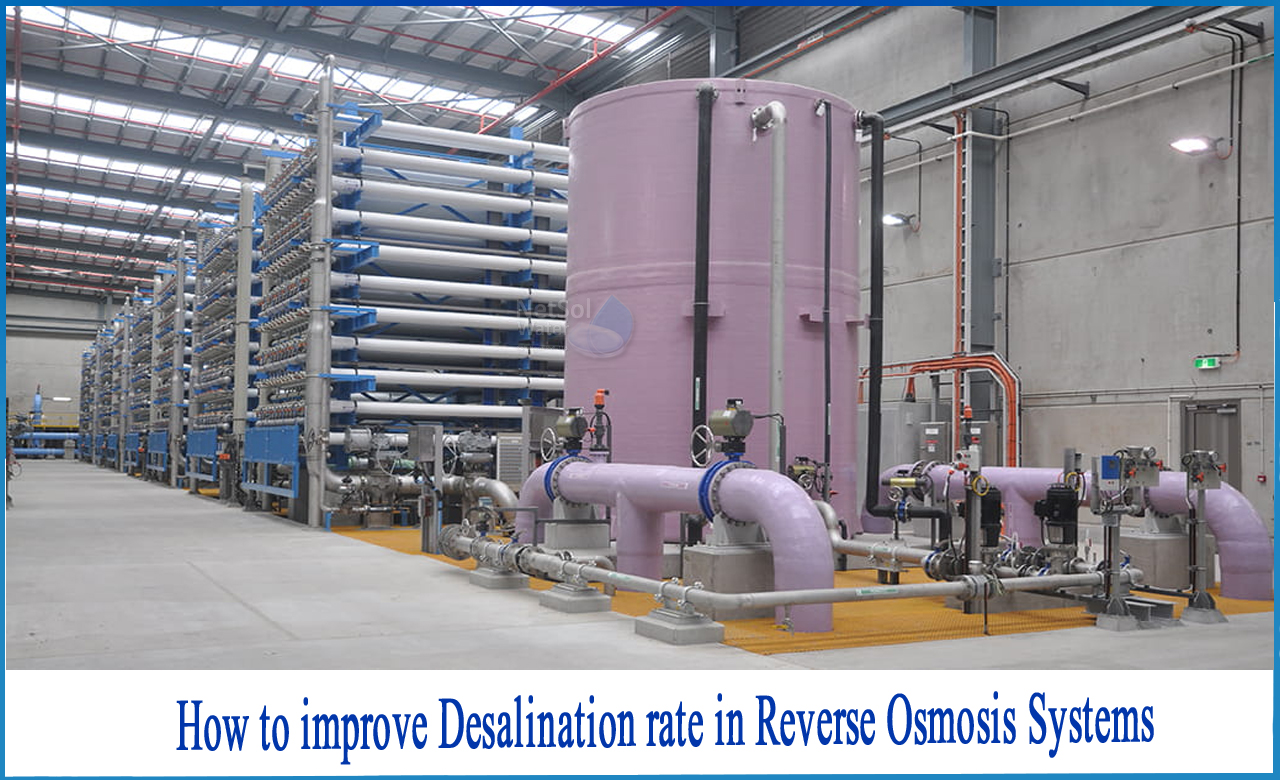What is Desalination?
Desalination is a procedure that removes salt from salty water. Desalination of saltwater produces water suitable for human consumption or irrigation. Brine is a by-product of the desalination process.
Desalinating sea water is often more expensive than fresh water from surfaceor groundwater, water recycling, and water conservation due to its energy consumption.However, these alternatives are not always accessible, and reserve depletion is a major issue worldwide. Desalination processes are typically powered by either thermal (in the case of distillation) or mechanical (e.g., reverse osmosis) energy.
What is reverse osmosis?
Reverse osmosis is the dominant desalination method in terms of installed capacity and annual growth. Semipermeable membranes and applied pressure (on the membrane feed side) are used in RO membrane processes to selectively promote water penetration while rejecting salts. Plant membrane systems that employ reverse osmosis often consume less energy than thermal desalination methods. The cost of energy in desalination processes varies greatly depending on water salinity, plant size, and process type.
However, it is significantly more complicated than it appears to be at first glance. It is also becoming increasingly important in a world where freshwater resources are being pressured by population increase, development, droughts, climate change, and other factors.
"There are four options for boosting water supplies: Increase your reuse, storage, conservation, or switch to a new source."
To recover freshwater from saltwater, reverse osmosis (RO) technology takes a significant amount of energy. Because of advancements in RO technology, seawater RO (SWRO) has become the dominant form of large-scale desalination around the world.
How to improve desalination rate in RO Systems?
Several SWRO process set-ups have been designed to increase both energy efficiency and water quality.
1: Membrane Upgrade:More water can be produced while the equipment's footprint is reduced.Membranes for desalination are currently made out of thin polyamide sheets wrapped into a hollow tube through which water wicks. One technique to save energy is to expand the width of the membranes, which is directly proportional to the amount of freshwater produced. It will be critical to improve systems without knocking them down and constructing a whole new plant.
2: Single pass RO:Because of its simplicity, ease of operation, and low cost, single pass RO is the most common and widely used configuration. Single pass RO yields permeate with TDS (total dissolved solids) concentrations ranging from 300 to 500 mg/l and a recovery rate of up to 50%. An additional RO run may be necessary if better grade product water is desired. The continued development of high-selective membranes, on the other hand, may give a more cost-effective answer to the second pass.
3: Two pass RO: It involves the addition of a second RO unit in series that treats permeate from the first to enhance quality. This approach is often impracticable due to the increased energy (and expense) necessary to run the second RO.
4: Partial two pass RO:Itentails passing a part of the first pass permeate through the second RO while the remainder of the permeate skips the RO and blends with the second pass permeate. The SEC is determined by the ratio of treated permeate to bypassed permeate.
5: Split partial RO:The designs include extracting permeate from several places along the membrane module. The permeate produced by the front (upstream) components is of greater quality than that produced by the rear (downstream) parts.Split partial RO takes advantage of the lower salinity front permeate by directing it directly to the product stream, while the higher salinity rear permeate is treated furtherby diluting with seawater feed and recycling back through the RO unit.
6: Forward Osmosis: The passive transfer of water molecules over a semi-permeable membrane from a more dilute feed solution to a less dilute draw solution is what FO is all about. Rather of adding hydraulic pressure to propel water in the opposite direction, FO depends on the osmotic pressure differential between two liquids. The diluted draw solution is further treated in order to recover freshwater from it. When compared to RO membranes, FO membranes operate with little to no hydraulic pressure, resulting in lower energy consumption. The lack of pumping leads in less particle suspension of solids, which reduces the chance of fouling.
7: Dilution Solution: RO-PRO, or reverse osmosis pressure retarded osmosis, is another method for lowering the energy cost of desalination. RO-PRO works by sending a contaminated freshwater source, such as wastewater, via a membrane into the very saline solution left over from reverse osmosis, which would otherwise be dumped into the ocean. The combination of the two generates pressure and energy, which are utilized to power a reverse osmosis pump.
What do we offer?
Netsol Water is a renowned producer of water and wastewater treatment plants. Based on client feedback and job quality, we are the most demanding organization in the water industry. We have a reputation for being the top commercial RO plant manufacturer, industrial RO plant manufacturer, sewage treatment plant manufacturer, effluent treatment plant manufacturer, and much more. Aside from that, our USP is 24x7 customer assistance.
For further inquiry, or product-purchase-related questions, give us a call on +91-9650608473 or email at enquiry@netsolwater.com.



